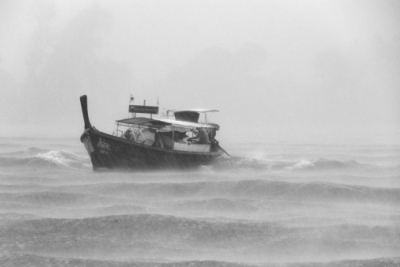
Weather The Storm
Just over a week ago Hurricane Matthew began as a disturbance over the Atlantic Ocean. Since then it has claimed 1, 034 lives (and counting), most of which were Haitians. Other islands hit were Jamaica, Cuba, The Bahamas and Dominican Republic.
For yacht crew, vessels and holiday makers in the area; these past few days have been riddled with fear, devastation and uncertainty as the Category 5 storm ripped through The Caribbean. In the unfortunate event you find yourself in a similar situation you don’t want to be caught unprepared.
To steer clear of hurricanes and sea storms mariners need accurate weather information. Most US Cargo ships are required to carry a Navigational Telex (NAVTEX) machine while yachts and smaller sea vessels have standard radio-receivers, fax machines and printers that give Captains up-to-date information about the weather along their course of voyage. Weatherfax is a trusted system that uses higher frequency radio waves to send black-and-white images to on board fax machines.
Vessels need as much information as possible. Any sudden change in temperature or climate can help the Captain foretell possible threats and be in a better position to make a decision for the boat.
Completely avoiding a storm can be difficult. With fuel costing thousands of dollars a day, taking a 2 day detour might not be economically feasible. In cases like these you might have to prepare yourselves to weather the storm.
When it comes to hurricanes; an empty vessel is a dangerous vessel. Think about how a leaf fares on a windy day in comparison to an acorn or small rock. It is vital that your yacht have as much cargo as is safe in order to stabilize the vessel in the strong waves because the anchor alone cannot do the work. Larger boats and cruise ships depend heavily on a ballast water system to keep the ship whipping from one side to another.
For those lucky enough to be at a port, “you’d obviously want to find what’s known as a hurricane hole, which is going to be a port with very good holding and high cliffs or mountains around the harbor to protect you from the winds,” former sea Captain Max Hardberger advises. Hardberger also suggests the anchor be given plenty of slack to prevent the agitated waters snapping the chain and leaving the vessel exposed to the erratic waves.
If all else fails and you find yourself amidst a hurricane; taking it head on would be your worst mistake. The safest direction to steer your vessel would be towards the shallowest waves and the lowest winds. The "low" or "clean" side of the storm is normally found if you follow the storm counterclockwise from its leading edge. The survival of a vessel, taking on a storm, is heavily dependant on steering-way; which is the whether the vessel has enough power to steer itself as opposed to being pushed around by the wind and waves. The amount of sea room a boat has is will also determine its safety during a storm. Ideally you’ll want to keep a safe distance between yourselves and anything you might crash into; be it a reef, the coastline or other boats and ships near you.
Storms can be very scary ordeals to experience but the more prepared you are the better your chances of survival. Make sure to read 5 Tips For Crew Safety to ensure that if you ever find yourself at sea when disaster strikes, that you are equipped to protect yourself and those around you. Godspeed.
